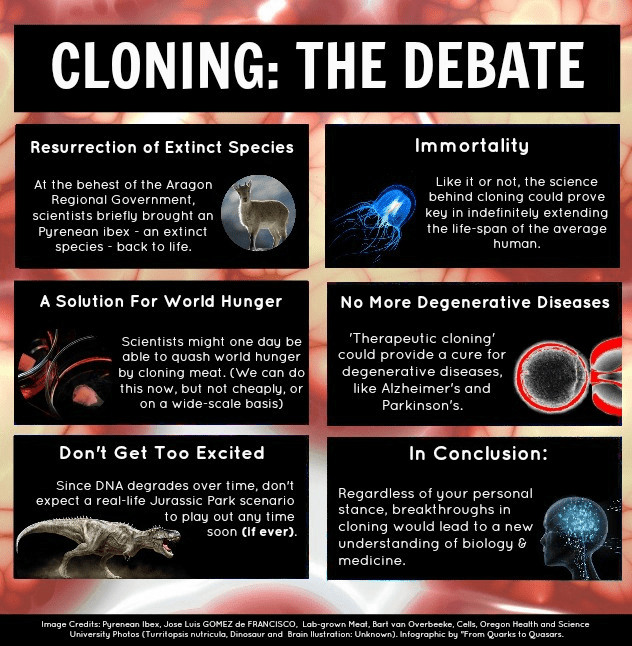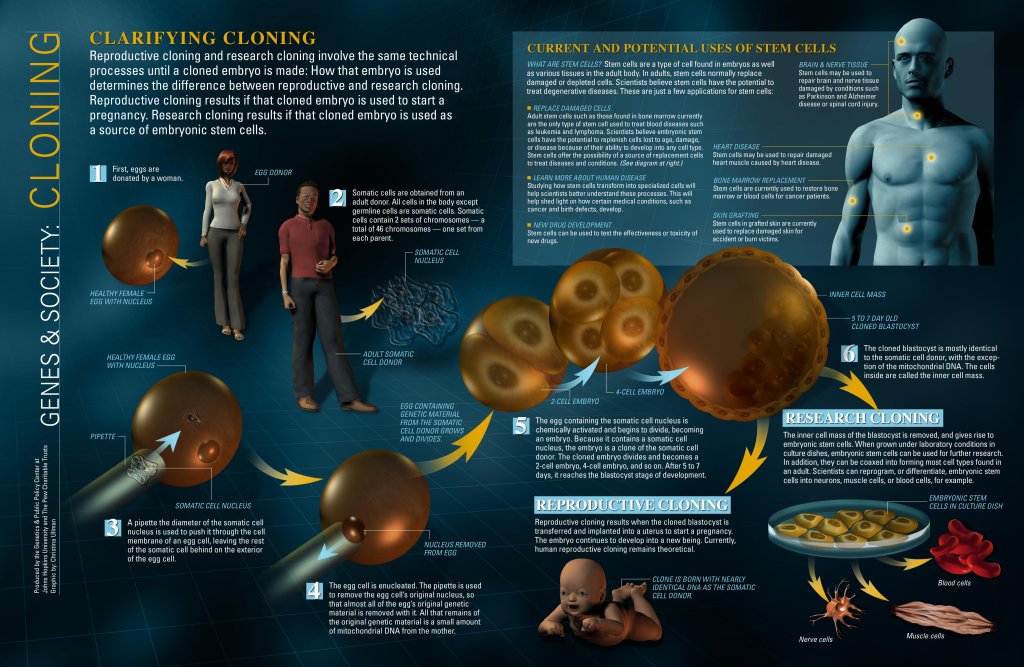

Can you imagine an Earth in the future, let’s say 2000 years from now. And there you are! Yes, you – or at least an identical version of you, a person with the same genetics, same looks, and similar thinking patterns to yours… just doing their daily business. This all happened because you (or someone that loved you) decided that you shoudn’t cease to exist on this planet just because you died. Of course, it wouldn’t actually be you, because what you are is not only in your genetics, but also in your life experiences, and those cannot be recreated. But it would be your clone, your replica, and he or she might bring your loved ones a little relief from your death. Additionally, it could bring some balm to those that fear death.
But what is a clone, really?
Simply put, a clone is a structure (cell, cell colony, tissue, organism, fragments of DNA etc.) that is genetically identical to it’s ancestor. And contrary to popular belief, cloning is a natural process that present in nature (not just some mad scheme invented by humans). It occurs in the asexual reproduction of living beings such as bacteria, plants, and even identical twins (early in development of an animal and embryo splits in two).
It’s also a biotechnological process that can create new parts of genetic material–one cellular organisms, organs, or entirely new living beings animals. There are different types of cloning. Of course cloning of animals, especially humans is the most controversial. It is called reproductive cloning.

So, how can we create a clone of an animal or human in a laboratory? When a human is conceived, a half of genetic material comes from mother (in the egg) and the other half from the father (in the sperm). With clones, whole genetic material comes from the donor. First. we need to remove maternal genetic material from the egg and then add the DNA of the subject we want to clone. Usually a light electric shock that starts cell division is needed.
Next, the early-stage embryo needs to be implanted in a surrogate mother. And in essence, that is how the clone is born. Of course, this is a complicated and difficult process, and many attempts are needed for it to succeed.
The first successfully cloned animal was sheep, Dolly, in 1996. Since then, science has made lots of different clones, but most of these ended tragically and died soon. The problem may be with cloning and that mutations that occur during that process, or it might be with the animal that was cloned. When the donors DNA samples are taken, the donor has already lived up to certain age. As a result, the DNA is aged and doesn’t function perfectly.
What could cloning do for us in the future? Pyrenean ibex was an animal that became extinct in 2000. Scientists have tried it bringing back to life using DNA samples from Celia, the last ibex. After many attempts, only one clone was born alive; unfortunately, and it died after seven minutes due to physical defects in its lungs. But someday soon, science will probably find a way to addressing these issues and will be capable of bringing back long extinct species (and protecting the endangered ones). This has also increased the possibility that it will one day be possible to reproduce long-dead species, such as woolly mammoths and even dinosaurs. That is definitely a useful (and terrifying) aspect of cloning.
Sci-fi may lead us to believe that we could clone ourselves in order to live forever, or raise clone to harvest as organ donors when falling sick. However, there are already strong human rights codes in place, and we are n the process of extending these rights to include non-human animals. As such, it is irrational to fear such a dystopian future.
But who knows what the future may bring. I invite you to tell us what do you think about reproductive cloning? Should it be used, when and why? And why not?
